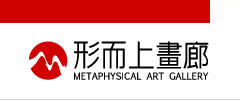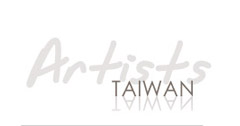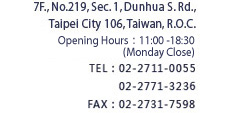| 1901 |
Born in Tainan City. |
| 1910 |
Entered Tainan's No.2 Pubic School. |
| 1915 |
Tested in Taipei Language School's Teachers
Department. |
| 1921 |
Graduated from Taipei Language School and
returned to Tainan's No.2 Public School as
a teacher. |
| 1926 |
Stepped down as a teacher and traveled to
Japan to study. Entered a private studio to
learn painting. |
| 1927 |
Haiao Wang Temple from a Distance was chosen
for the First Taiwan Art Exhibit. |
| 1928 |
Tested in Tokyo Fine Art Academy's Western
Painting Department ; Became a member of the
Red Island Club. |
| 1929 |
Study in Tokyo Fine Arts School.
Guan Di Temple from a Distance was chosen
for the 3rd Taiwan Art Exhibit. |
| 1930 |
Hang Zhou view from a Distance was chosen
for the 4th Taiwan Art Exhibit. |
| 1933 |
Graduated from Tokyo Fine Arts School. |
| 1937 |
Went to China. First traveled and sketched
the Northeast. Moved to Beijing. |
| 1938 |
Taught at Beijing Art School and in Beijing
Normal College's Craftsmanship Department. |
| 1939 |
Held his first individual exhibit at Beijing's
Sun Yat-Sen Park Studio. Sketched together
with Umehara when he came to Beijing. |
| 1940 |
Married Chu Wan-Hua. |
| 1941 |
Held an exhibit at the new Fine Arts Museum
in Beijing ones a year every year hereafter. |
| 1942 |
Taught at Capital Art School. |
| 1943 |
First attempt at painting oil on paper. |
| 1945 |
Held individual exhibition at Shanghai's
International Hotel.
At the end of World War Two, became a professor
at National Beijing Normal University. |
| 1947 |
Stepped down from teaching because he contracted
black fever.Entered Beijing's Chungho Hospital
to treat his ailment. |
| 1948 |
In September, released from the hospital
and returned to Taiwan to Recuperate.
Held his First individual exhibit at the Sun
Yat-Sen Memorial.
Circled the island with friends and sketched. |
| 1949 |
Returned to Tainan where he set up permanent
residence.
Held an individual exhibit at Tainan's city
council. |
| 1950 |
Took a position in Tainan Provincial Engineering
Institute's Architecture Department. |
| 1952 |
14. June, Founded the Tainan Art Research
Committee (TARC) which he then chaired for
twenty years.
In February, held first TARC exhibition at
Tainan's Erhsin Ceremonial Hall.
In March, TARC created the Art Research Institute
located on Tainan's An P'ing Road for the
practical advancement of the fine arts. |
| 1954 |
Served as a judge for the National Teachers
Art Exhibition. |
| 1955 |
Served as a judge for the Tenth Provincial
Art Exhibition. |
| 1958 |
TRAC, the Tainan Rotary Club, and the Tanan
Teacher's Association sponsored his second
individual exhibition since returning to
Taiwan. |
| 1960 |
National History Museum held a Sixty Year
(Thirty Years Painting) retrospective ExhibitWhich
showed 100 works. |
| 1962 |
Held Tenth TARC Exhibition, This was the
first time it toured the island. |
| 1965 |
On Umehara Ryuzaburo's recommendation, was
offered a teaching position at Tokyo Art College,
but because of arthritis, could not accept. |
| 1966 |
Received Chinese Art Students' Association
Gold Medal and shown in their exhibition. |
| 1970 |
Retired from Cheng Kung University
TARC exhibition toured Taitung. |
| 1972 |
Served as a judge for the Sixth National
Art Exhibition. |
| 1974 |
January 23, died at the age of 74. |
| 1980 |
The posthumous exhibitions of Kuo Po-chuan
were held in Taipei and Tainan.
Po-chuan and I was published by Chu Wan-hua. |
| 1997 |
His family donated forty of his paintings
to Taipei Fine Art Museum. |
| 1998 |
Taipei Fine Art Museum hosted the exhibition
"Ryuzaburo Umehara and Kuo Po-chuan.
His family donated thirty-one of his paintings
to National Taiwan Museum of Fine Art in Taichung.
A Special exhibition, "Kuo Po-chuan -
Early Taiwan on Chinese Paper," was held
at Metaphysical Art Gallery in Taipei. |
| 2002 |
The exhibition, "The centenary of Kuo
Po-chuan - The South, the Sunshine, and Chih-kan
Lou," was held at Metaphysical Art Gallery
in Taipei.
The exhibition, "The South, the Sunshine,
and Chih-kan Lou -- Kuo Po-chuan's Portrait
of Tainan" was held at the Art Center
of National Cheng-Kung University in Tainan. |







